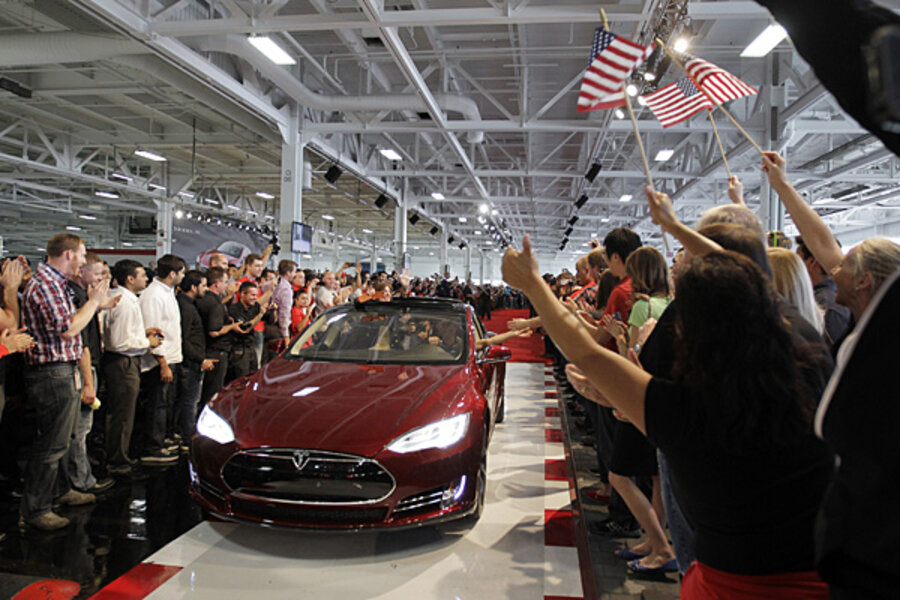Tesla vs. New York Times: How well do electric cars stand up to cold?
Loading...
Tesla Motors CEO Elon Musk has gone on the offensive after an unflattering portrayal of the Tesla Motors Model S electric car appeared in The New York Times last week.
In a lengthy post on the Tesla Motors blog Wednesday, Mr. Musk published data collected from the vehicle used in the review, demonstrating what he says are gross inaccuracies in the Times's highly critical story.
Behind the back-and-forth is a debate over the impact of cold weather on the distance a Tesla can drive on a single charge – a sensitive subject for electric carmakers eager to ease a sense of "range anxiety" among consumers.
The Times piece details one reporter's failed attempt to drive a Model S from Washington to Boston, recharging at two ultrafast charging stations Tesla installed along the way. After crossing into New Jersey, the car's stated range dropped unexpectedly, according to John Broder, the author of the critique.
Despite consulting with Tesla representatives over the phone, the electric car shut down completely on a cold day in Branford, Conn., and ended up on the back of a flatbed tow truck.
Mr. Broder blames the failure at least partially on winter temperatures. In the post-trip debrief, Tesla's chief technology officer noted that cold weather inflicts a 10 percent range penalty. That number's higher when the heater is running.
Musk has called the article "fake," and published a lengthy blog post replete with vehicle logs he claims pokes significant holes in Broder's original story. The New York Times has so far stood by the piece, but the Wall Street Journal says the news company is reviewing Musk's data-laden rebuttal.
There's no denying that winter taxes electric cars. They rely on electricity generated by chemical reactions in lithium-ion batteries. Low temperatures slow down those reactions and make the battery less willing to accept a charge.
The 2012 Nissan Leaf, for example, has a range of up to 138 miles in optimum conditions. In winter conditions, it's best to plan to recharge every 50 miles if you want to stay warm and make good progress, according to a December 2011 test by GreenCar Reports.
Of course, winter battery woes aren't limited to electric cars. Anyone who has lived through a harsh winter knows dead batteries are a reality even for gas-powered cars.
And carmakers are developing ways to minimize winter's drain on the battery. The Tesla Model S, for example, employs "liquid thermal management," which eschews passive air cooling and instead moderates the battery's temperature with a liquid.
In his Wednesday blog post, Musk defended Tesla's winter capabilities.
"[O]ur highest per capita sales are in Norway, where customers drive our cars during Arctic winters in permanent midnight, and in Switzerland, high among the snowy Alps," Musk wrote. "About half of all Tesla Roadster and Model S customers drive in temperatures well below freezing in winter."
To further preserve range performance in the winter, GreenCar Reports encourages electric car drivers to store their car inside, keep their tires fully inflated, and allow extra time for recharging.







